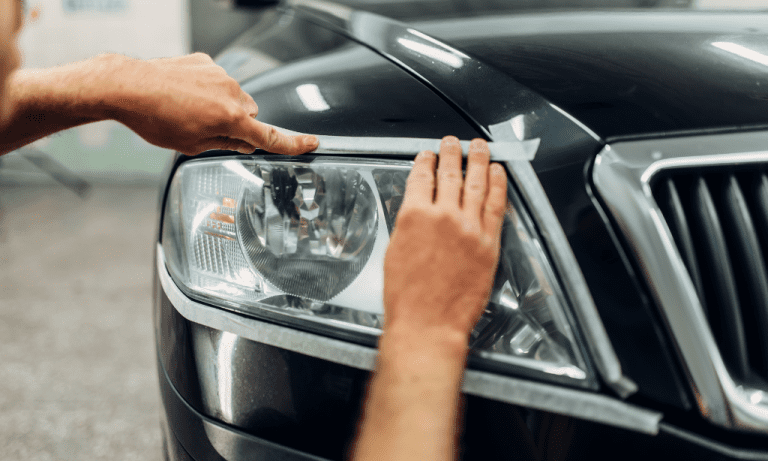Can You Use Windex On Car Paint? Discover the Surprising Truth!
No, using windex on car paint is not recommended as it may cause damage. When cleaning car paint, it is important to use products specifically formulated for automotive use to protect its finish and prevent any potential harm.
Using windex, which is designed for glass cleaning, can strip away the wax, paint sealants, and damage the paint job of the car. Therefore, it is best to opt for car wash soaps or cleaners that are gentle and safe for automotive surfaces.
These products are designed to effectively remove dirt and grime without harming the paint or leaving any residues behind. By using the right products, you can maintain the beauty and longevity of your car’s paint finish.
The Effects Of Using Windex On Car Paint
Windex is a popular household cleaner that many people swear by for various cleaning tasks. But what about using it on your car paint? Can windex be safely used on car paint without causing any damage? We will explore the effects of using windex on car paint and whether it’s a good idea or not.
Potential Damage To The Paint Surface
Using windex on car paint can potentially cause several types of damage. The chemical composition of windex and its interaction with car paint can lead to various issues. Let’s take a closer look at these potential damages.
Chemical Reactions With Car Paint
Windex contains chemicals that may react with the paint on your car’s surface. These chemical reactions can result in unpleasant consequences for your car’s paint job.
Discoloration And Fading Of Paint
One of the most common effects of using windex on car paint is discoloration and fading. The harsh chemicals in windex can strip away the protective layer of your car’s paint, causing it to lose its shine and vibrancy over time.
Scratches And Swirl Marks
The chemicals in windex, combined with the friction from wiping, can also lead to scratches and swirl marks on your car’s paint. These imperfections can be unsightly and may require costly repairs to fix.
Concerns About Windex Ingredients
Windex contains various ingredients that can be harsh on car paint. One of the main concerns is the presence of ammonia in windex.
Ammonia As A Key Ingredient
Ammonia is a powerful cleaning agent found in windex. While it can be effective at cutting through grease and grime, it can also be detrimental to your car’s paint if used improperly.
Effects Of Ammonia On Car Paint
When ammonia comes into contact with car paint, it can strip away the protective wax and clear coat, making the paint more vulnerable to damage from uv rays, oxidation, and environmental contaminants.
Risk Of Long-Term Damage
Using windex on car paint regularly can lead to long-term damage. The cumulative effects of the harsh chemicals in windex can deteriorate the quality of the paint over time, resulting in a dull and worn-out appearance.
While windex may seem like a convenient option for cleaning your car, it is not recommended for use on car paint. The potential damage, including discoloration, fading, scratches, and swirl marks, outweigh any short-term benefits. It’s best to stick with products specifically designed for automotive paint, ensuring your car remains in its best condition for years to come.
Safer Alternatives To Windex For Car Paint Cleaning
When it comes to keeping your car’s paint looking pristine, using the right cleaning products is crucial. While windex is known for its effective glass cleaning capabilities, using it on car paint can be a risky move. The ammonia and other chemicals in windex can potentially damage the paint and leave unsightly streaks behind.
But fear not, there are plenty of safer alternatives that can give your car a showroom shine without the risk. Let’s explore some of these options:
Automotive-Specific Glass Cleaners
- Specially formulated for use on car windows
- Designed to be safe for car paint as well
- Provide streak-free cleaning without compromise
Compatibility With Car Paint
- Important to ensure that cleaner is safe for all types of car paint
- Check for compatibility before using it on your vehicle
Non-Damaging Formulations
- Look for cleaners that are gentle on car paint
- Avoid harsh chemicals that can lead to fading or damage
Effective Streak-Free Cleaning
- Choose products that guarantee streak-free results
- Leave your car windows and paint looking crystal clear
Diy Homemade Car Window Cleaner
Making your own car window cleaner can be a cost-effective and eco-friendly option. Here’s what you’ll need to create your own homemade solution:
Ingredients and mixing instructions:
- Mix equal parts white vinegar and water in a spray bottle
- Add a few drops of dish soap to the mixture
- Shake well to blend the ingredients
Safe for car paint and environment:
- Vinegar is gentle on car paint and safe to use
- Eco-friendly alternative to commercial cleaners
Economic and eco-friendly option:
- Homemade cleaner can save you money
- Reduce your environmental impact by using natural ingredients
Professional Car Detailing Services
Sometimes, it’s best to leave the job to the professionals. Car detailing services offer expert knowledge and specialized products that can help protect and enhance your car’s paint.
Expertise and specialized products:
- Professional detailers have extensive knowledge and experience
- Use high-quality products designed specifically for car paint
Protective coatings and treatments:
- Professional services offer protective coatings to shield your car’s paint from damage
- Treatments like waxing and paint sealants provide long-lasting shine
Overall car care benefits:
- Professional detailing goes beyond just cleaning the paint
- Helps maintain the overall condition of your car
By opting for safer alternatives to windex and considering professional detailing services, you can ensure that your car’s paint remains in top-notch condition. Whether you choose automotive-specific cleaners, homemade solutions, or professional assistance, keeping your car clean and well-maintained will help protect its value and enhance your driving experience.
Proper Steps To Clean Car Paint Safely
Taking proper care of your car’s paint is essential to keep it looking shiny and new. Whether you’re dealing with a stubborn dirt spot or just want to give your vehicle a good clean, it’s important to follow the right steps to avoid damaging the paint.
In this section, we’ll outline the proper steps to clean car paint safely, ensuring that your car stays in top condition. So let’s get started!
Gather The Necessary Cleaning Supplies:
Before you begin cleaning your car’s paint, it’s important to gather all the necessary supplies. Here’s what you’ll need:
- Soft microfiber cloths: These are essential for gently wiping the paint surface without scratching it.
- Car-specific cleaning solution: Using a cleaning solution specifically designed for cars ensures that it won’t damage the paint or leave behind any residue.
- Water and bucket: Diluting the cleaning solution in a bucket of water allows for easy application and helps to avoid using the solution directly on the paint surface.
Preparing The Car Surface:
Preparing the car surface before cleaning is crucial for a successful and safe cleaning process. Here are the steps to follow:
- Rinse off loose dirt and debris: Use a hose or pressure washer to rinse off any loose dirt and debris on the car’s paint. This helps prevent scratching the surface while cleaning.
- Avoid direct sunlight and high temperatures: It’s best to clean your car in a shaded area or during cooler hours of the day. Direct sunlight and high temperatures can cause the cleaning solution to dry too quickly and leave streaks or spots on the paint.
Cleaning The Car Paint:
Now that you’ve gathered the supplies and prepared the car surface, it’s time to clean the paint. Follow these steps:
- Apply cleaning solution to cloth: Pour a small amount of the car-specific cleaning solution onto a soft microfiber cloth. Avoid applying the solution directly onto the paint surface to prevent excessive dripping.
- Gently wipe the paint surface: Start wiping the paint surface using the cloth and cleaning solution. Use gentle, circular motions to remove any dirt or grime effectively. Avoid applying too much pressure to prevent scratching the paint.
- Rinse cloth frequently: To prevent spreading dirt or debris, rinse the cloth frequently in the water bucket. This ensures that you’re using a clean cloth for each wipe.
Drying And Finishing Touches:
After cleaning the car paint, it’s crucial to dry it properly and give it some finishing touches. Here’s what you need to do:
- Pat dry the car paint: Use a clean, dry microfiber cloth to pat dry the car paint gently. Avoid rubbing the paint surface as it can cause swirl marks.
- Apply a protective wax or sealant: After drying the paint, consider applying a protective wax or sealant. This helps to create a barrier against contaminants and keeps your car looking shiny for longer.
- Inspect for any remaining streaks or spots: Finally, take a thorough look at your car’s paint surface to ensure there are no remaining streaks or spots. Use a clean cloth to remove any final imperfections.
By following these proper steps, you can safely clean your car’s paint and keep it looking its best. Remember to use the right cleaning supplies, prepare the surface properly, clean gently, and finish with proper drying and protection. With regular maintenance, your car’s paint will stay in top-notch condition, making it the envy of the neighborhood.
Conclusion
To sum it up, using windex on car paint requires caution and careful consideration. While windex is primarily designed for glass surfaces, it can be used on car paint in certain situations. However, it is important to dilute it properly and test it on a small, inconspicuous area before applying it to the entire surface.
Additionally, windex should never be used on car paint that is chipped, scratched, or damaged, as it can exacerbate the problem. It is also crucial to remember that there are other dedicated car detailing products on the market that are specifically formulated to clean and protect automotive paint.
These products are generally a safer and more effective option for maintaining the appearance and longevity of car paint. Ultimately, understanding the limitations and potential risks of using windex on car paint will help car owners make informed decisions when it comes to maintaining their vehicles’ exterior surfaces.
- Protecting Your Truck Bed: A Guide To Truck Bed Covers - July 14, 2025
- Finding The Right 88-98 Chevy Truck Bed Cover - July 14, 2025
- Finding The Right 88-98 Chevy Truck Bed Cover - July 14, 2025

